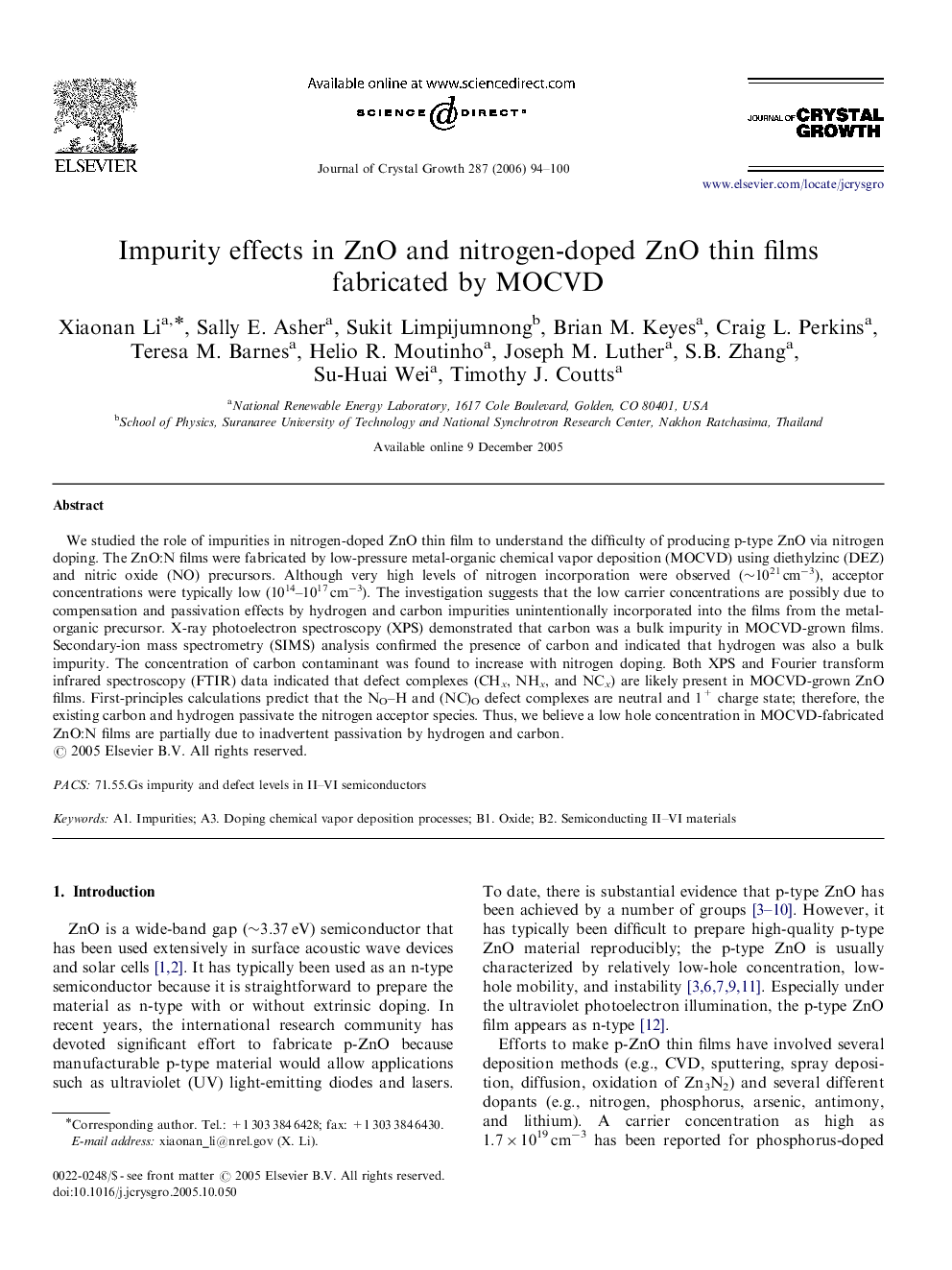| Article ID | Journal | Published Year | Pages | File Type |
|---|---|---|---|---|
| 1796838 | Journal of Crystal Growth | 2006 | 7 Pages |
We studied the role of impurities in nitrogen-doped ZnO thin film to understand the difficulty of producing p-type ZnO via nitrogen doping. The ZnO:N films were fabricated by low-pressure metal-organic chemical vapor deposition (MOCVD) using diethylzinc (DEZ) and nitric oxide (NO) precursors. Although very high levels of nitrogen incorporation were observed (∼1021 cm−3), acceptor concentrations were typically low (1014–1017 cm−3). The investigation suggests that the low carrier concentrations are possibly due to compensation and passivation effects by hydrogen and carbon impurities unintentionally incorporated into the films from the metal-organic precursor. X-ray photoelectron spectroscopy (XPS) demonstrated that carbon was a bulk impurity in MOCVD-grown films. Secondary-ion mass spectrometry (SIMS) analysis confirmed the presence of carbon and indicated that hydrogen was also a bulk impurity. The concentration of carbon contaminant was found to increase with nitrogen doping. Both XPS and Fourier transform infrared spectroscopy (FTIR) data indicated that defect complexes (CHx, NHx, and NCx) are likely present in MOCVD-grown ZnO films. First-principles calculations predict that the NO–H and (NC)O defect complexes are neutral and 1+ charge state; therefore, the existing carbon and hydrogen passivate the nitrogen acceptor species. Thus, we believe a low hole concentration in MOCVD-fabricated ZnO:N films are partially due to inadvertent passivation by hydrogen and carbon.
